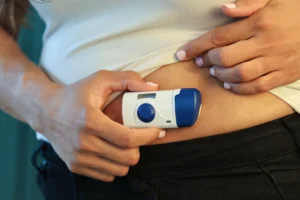Approach:
The study employed a comprehensive, multi-dimensional methodology to collect and analyze data on subcutaneous autoinjectors, pen devices, and related drug-device combinations. It began with extensive secondary research, reviewing market reports, reputable news sources, and peer-reviewed publications via PubMed using targeted keywords to gather relevant insights.
Simultaneously, clinical trial registries were carefully examined to identify ongoing and completed studies involving these drug-device products, adding empirical and developmental context.
To understand the competitive landscape, a wide-ranging company mapping identified 310 entities in the sector. After applying strict exclusion criteria, 55 companies underwent detailed profiling. Further narrowing resulted in a focused analysis of 35 companies and 148 devices, allowing for an in-depth evaluation of product pipelines, technological innovations, and market dynamics.
This robust, layered approach provided a holistic view of the market, supporting strategic insights into industry trends and key players in subcutaneous drug delivery devices.
Key findings:
The subcutaneous drug delivery device market is primarily led by autoinjectors, followed by pen injectors and wearable devices. Major players in this sector include Owen Mumford, SHL Medical, Ypsomed AG, E3D, and Antares Pharma. Spring-based drive mechanisms dominate, representing 65% of devices, while electromechanical and motor-driven technologies also hold notable shares. In terms of usability, 58% of devices are disposable systems, promoting ease of use and hygiene. Fixed-dose delivery systems account for 35%, reflecting a preference for predetermined dosing. The majority of devices (62%) accommodate low to medium injection volumes, with 38% designed for handling high-viscosity formulations, catering to diverse therapeutic needs. User experience enhancements are evident, with 46% of devices offering audio and visual feedback. Additionally, smart connectivity features are integrated into about 31% of devices, signaling a trend toward digital innovation and remote patient monitoring in drug delivery technology.
Business Impact:
The client gained valuable insights into novel technologies and drive mechanisms, enabling more targeted R&D efforts to develop efficient and user-centric devices. Detailed information on device usability, dosage types, and smart connectivity features supports enhanced regulatory compliance and strengthens market positioning. Additionally, a clear understanding of current trends in subcutaneous drug delivery systems equips the client to make informed strategic decisions, optimize product development, and effectively anticipate market needs, ultimately driving competitive advantage and accelerating time-to-market.
